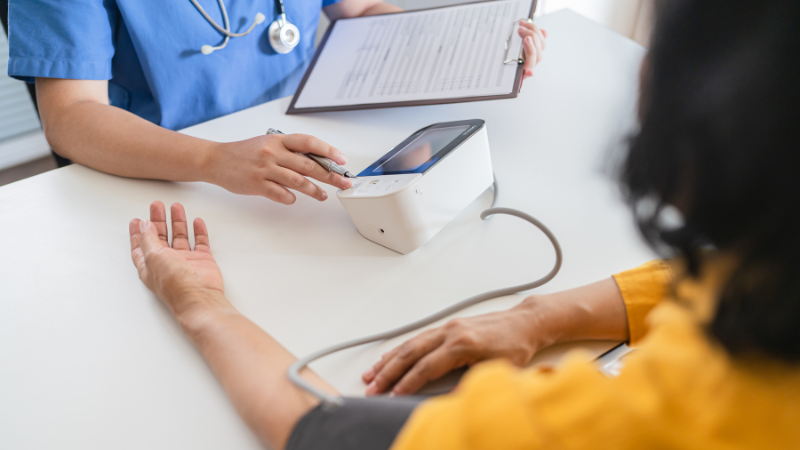
Strokes can be debilitating, but in many cases, they can be prevented. Regular visits to your primary care provider, along with healthy lifestyle changes and medication, can go a long way toward keeping you healthy.
A stroke happens when a part of the brain is starved for oxygen and blood, usually because a blood clot or fatty deposits (plaque) block an artery. This type of stroke is an ischemic stroke.
Another kind of stroke, a hemorrhagic stroke, occurs when an artery in the brain leaks blood or bursts, causing pressure in the brain.
A transient ischemic attack, also known as a TIA, happens when there is a temporary blockage to the brain.[i] The symptoms are the same as a major stroke – trouble seeing, walking, speaking and confusion – but resolve within 24 hours. A TIA is a red flag you are at risk for a major stroke. Even though some TIAs go away within 10 minutes, it is still vital that you see your health care provider for an evaluation. Studies show that patients who start taking blood thinners or aspirin have a reduced risk for a full-blown stroke.

Risk factors
It’s important to see your primary care physician to catch risk factors such as high blood pressure, which is the No. 1 risk factor in both men and women. Another risk factor is smoking. I also keep a close eye on my patients’ blood work, especially their cholesterol and triglyceride levels. High levels of these can also put you at a greater risk of cardiovascular disease and stroke.
How to reduce your risk
Control high blood pressure. A normal blood pressure reading is less than 120 over less than 80. If yours is consistently higher, lifestyle changes or medication is an essential step to avoiding stroke.
Eat better. I recommend two diet plans to my patients to lower blood pressure and lose weight: the Mediterranean diet and the DASH (Dietary Approaches to Stop Hypertension) diet. Both plans call for whole grains, lots of fruits and vegetables and little or no processed foods. You can find a comparison of the two plans at the National Institutes of Health website.
Get active. The Centers for Disease Control and Prevention recommend older adults get at least 30 minutes of moderate-intensity exercise such as walking, five days a week. If you have not been active in the past, start out slowly. Anyone starting a new exercise program should talk to their doctor for guidance.
Control your blood sugar. Everyone should take steps to control their blood sugar. If you have diabetes, this is even more critical. Ask your doctor what A1c test levels you should aim for, eat healthy and take your medication as prescribed.
Avoid alcohol. Drinking too much alcohol can cause damage to your kidneys, liver and brain, as well as high blood pressure, which is a risk factor for stroke.
Check your heartbeat. Atrial fibrillation, a heartbeat that is fast or irregular, is a risk factor because it causes blood to pool in the heart and become sluggish, which can cause blood clots to form. Blood clots can travel to the brain and block the flow of blood. Some people feel a fluttering in their chest, but many people don’t have any symptoms, which is another good reason to see your doctor regularly.
Warning signs
Signs you may be having a stroke can come on suddenly, so if you experience the following symptoms unexpectedly, get help immediately:
- Sudden numbness or weakness in the face, arm, or leg, especially on one side of the body.
- Sudden confusion, trouble speaking, or difficulty understanding speech.
- Sudden trouble seeing in one or both eyes.
- Sudden trouble walking, dizziness, loss of balance, or lack of coordination.
- Sudden severe headache with no known cause
There is also a way to detect symptoms in others by remembering the F.A.S.T. method. F.A.S.T. is an acronym that stands for:
F (Face): Ask the person to smile. This helps identify whether one side of their face is drooping.
A (Arms): Ask the person to raise both of their arms and look for weakness or difficultly moving one side (one arm may drift downward).
S (Speech): Ask the person to repeat a simple phrase and listen to see if their speech is normal. If someone is having a stroke, their speech may be slurred.
T (Time): If the person displays any of these signs, call 911 right away. Note the timeline of when the symptoms started. Sharing that information with the first responders can help clinicians determine the best treatment.
To read more WellMed health advice articles, visit agehealthynow.com.
[i] https://www.cdc.gov/stroke/index.htm
